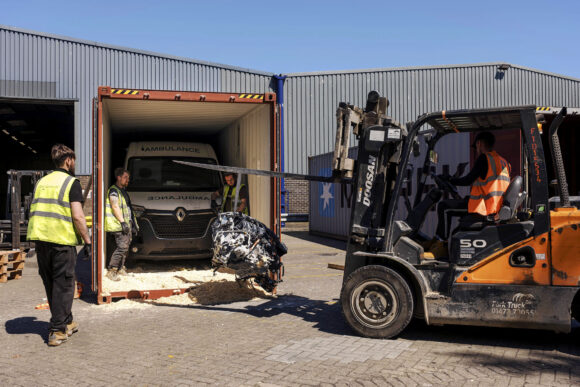To the untrained eye, the red shipping container at Felixstowe looked no different to the thousands of others stacked up at Britain’s busiest seaport.
Destined for Africa, its contents were listed as “household goods,” but to police officer Adam Gibson, something didn’t add up. So workers broke into the container.
Gibson was right. Inside were four sport utility vehicles—three Toyota RAV4s and a Lexus RX 450h. Two were on the ground and the others were dangling from the roof, squeezed in like Tetris blocks.

After they were lifted out on a forklift, Gibson ran checks. The cars were all stolen and their license plates had been changed.
Car theft is a growing problem in the UK. Almost 130,000 vehicles were stolen in the year ending March 2024—near a 15-year high—costing insurers £640 million ($867 million), according to the most recent data. And at least some of them are ending up overseas. As one of the few specialist officers at the National Vehicle Crime Intelligence Service (NaVCIS), an industry-funded police unit focused on car-related crime, Gibson’s job is to scour containers and keep stolen cars from leaving the country.
The thieves he’s up against are not just opportunists or joyriders. Most vehicle theft nowadays is orchestrated by organized gangs cashing in on overseas demand for SUVs. And with numbers climbing, police have struggled to stop it: for each stolen car Gibson and his colleagues intercept, he estimates that another nine slip through their fingers.
“It’s not amateurs that are playing at this,” Gibson said. “This is proper business.”
As cars have become increasingly high-tech, a technological arms race has also kicked off between manufacturers and thieves. Data from the Office for National Statistics shows that 58% of vehicle thefts in England and Wales in the year ending April 2024 happened with the help of “signal-jammers”—electronic tools capable of disrupting remote locking devices. That was up from 40% the previous year. Toyota, which also owns Lexus, said theft in recent years had reached “almost epidemic proportion in the UK.”

